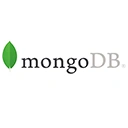Using MongoDB for data science tasks is increasingly popular due to its flexible data model and powerful aggregation capabilities. In this in-depth guide, we'll explore advanced data science techniques with MongoDB and provide a sample code snippet for reference.
1. Data Preparation
Effective data science starts with data preparation. MongoDB can store both structured and unstructured data. Here's an example of inserting data into MongoDB:
db.data.insertOne({
name: "John Doe",
age: 30,
location: "New York",
interests: ["machine learning", "data analysis"]
})
2. Data Aggregation and Analysis
MongoDB's Aggregation Framework allows you to perform complex data transformations and analytics. You can use operators like `$group` and `$project` to shape your data for analysis. Here's an example of calculating the average age of users with a specific interest:
db.data.aggregate([
{
$unwind: "$interests"
},
{
$match: { interests: "machine learning" }
},
{
$group: {
_id: null,
averageAge: { $avg: "$age" }
}
}
])
3. Integration with Python and Jupyter Notebooks
Integrate MongoDB with Python for advanced data science using the PyMongo driver. Here's a sample code snippet to connect to MongoDB and retrieve data:
import pymongo
client = pymongo.MongoClient("mongodb://localhost:27017/")
db = client["mydatabase"]
collection = db["data"]
for doc in collection.find({ "interests": "machine learning" }):
print(doc)
4. Machine Learning with MongoDB
Perform machine learning tasks using data stored in MongoDB. You can use Python libraries like scikit-learn, TensorFlow, or PyTorch. Here's a simplified example of training a machine learning model:
from sklearn.model_selection import train_test_split
from sklearn.linear_model import LinearRegression
# Load data from MongoDB
data = [doc for doc in collection.find()]
# Preprocess data
# ...
# Split data into training and testing sets
X_train, X_test, y_train, y_test = train_test_split(X, y, test_size=0.2)
# Train a machine learning model
model = LinearRegression()
model.fit(X_train, y_train)
# ...
These are some advanced data science techniques with MongoDB. Depending on your use case, you can expand your knowledge in areas such as natural language processing, deep learning, and graph analytics.
For more detailed information and best practices, consult the official MongoDB Aggregation documentation and the documentation of Python libraries for data science.

